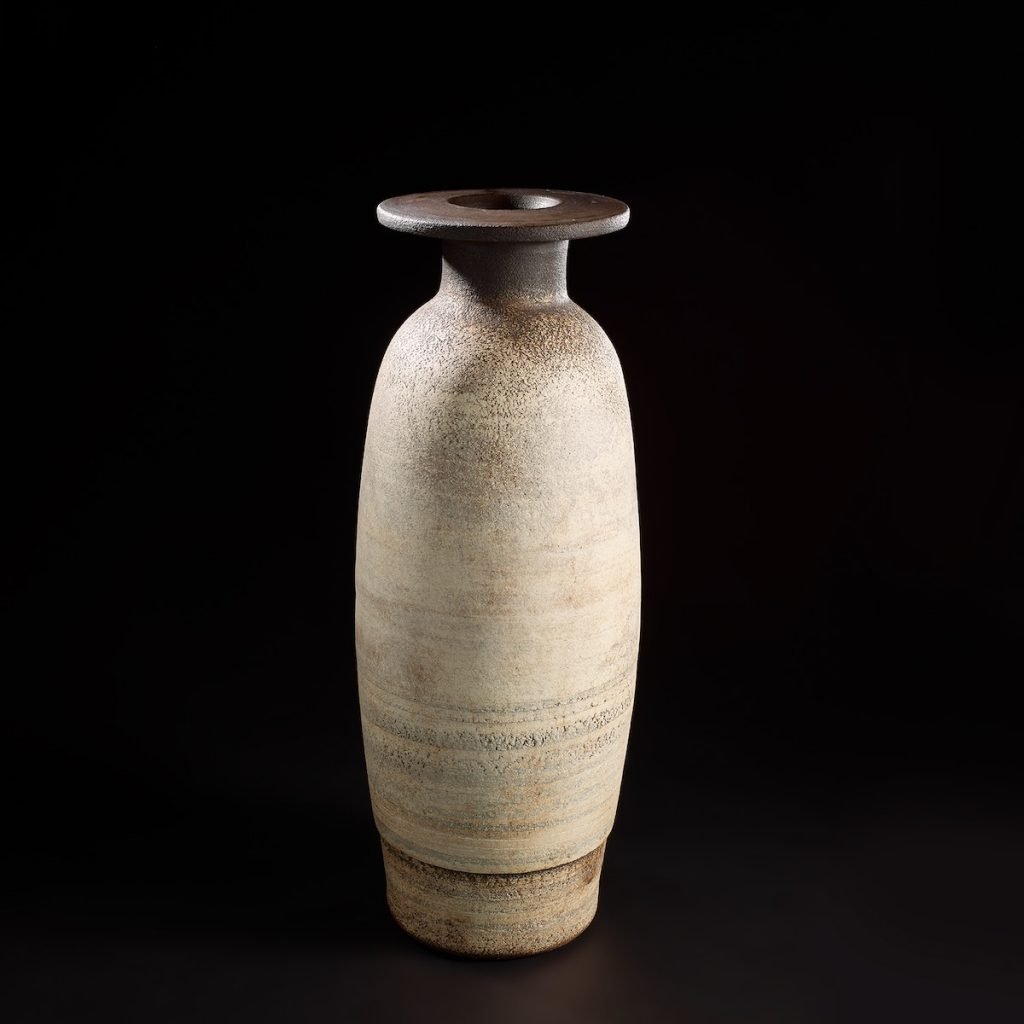Art World
A Sculpture Once Owned by Henry Moore Is Temporarily Barred From Leaving the U.K.
The Hans Coper work is currently being protected from export due to its cultural value to the nation.

The Hans Coper work is currently being protected from export due to its cultural value to the nation.

Verity Babbs

A temporary export bar has been placed on a sculpture by Hans Coper, valued at almost £600,000 ($753,950), to give U.K. institutions time to acquire the work for the nation.
The stoneware work, shaped like a bottle, had been commissioned by the art dealer Harry Fischer as a Christmas gift for world-famous sculptor Henry Moore. Created between 1959 and 1962, it was displayed in the living room of Moore’s Hertfordshire home until he passed away in 1986.
The sculpture is made up of layered porcelain slips, featuring a disc top, and a manganese glaze. Its textured body is typical of Coper’s style and it is one of the earliest examples of the artist’s iconic vessels made in the 1960s and ’70s.
The decision on whether to give the bottle a license for exportation has been delayed until March 2024. Following that, the owners will have a 15 business-day consideration period for any offers to buy the bottle for the recommended value of £584,200 plus VAT ($734,130). Public institutions making lower offers may be considered, given the potential benefit to the public. This comes following the advice of the Reviewing Committee on the Export of Works of Art and Objects of Cultural Interest, a body which advises the Department of Culture, Media and Sport on the export of cultural property.
Lord Parkinson of Whitley Bay, the Arts and Heritage Minister said about the bottle: “This fine piece is not only of exceptional significance to the study of the development of Hans Coper’s work, but also to the understanding of Henry Moore, given he displayed it in his living room at Hoglands—all the more reason to hope that a U.K. buyer will come forward so that it can stay here to be studied and enjoyed for generations to come.”

Hans Coper, Bottle detail (c. 1959 – 1962). Photo courtesy of the Department for Culture, Media and Sport.
The RCEWA was established in 1952 and makes its assessments based on the “Waverly Criteria”—three questions which establish an object’s cultural significance: Is it closely connected with our history and national life? Is it of outstanding aesthetic importance? Is it of outstanding significance for the study of some particular branch of art, learning or history? The RCEWA believe that the bottle by Coper meets all three criteria. Stuart Lochhead, a committee member of the RCEWA said that “of extraordinary grace and on a striking scale, the export of this work of art would be a misfortune for the nation.”
Coper was born in Germany in 1920, arriving in Britain in 1939. In 1946, and without any previous experience, he joined the London studio of Lucie Rie, a pioneering female Austrian potter known for her experimentation with glazes and decoration. He soon developed his abstract, sculptural style for which he would become a leading figure in the studio pottery movement. Work by Coper is held in the collections of the Metropolitan Museum of Art, Victoria and Albert Museum, and in 1962 he was commissioned to create a set of seven-foot candlesticks for the high altar at Coventry Cathedral.
More Trending Stories:
Inspector Schachter Uncovers Allegations Regarding the Latest Art World Scandal—And It’s a Doozy
Archaeologists Call Foul on the Purported Discovery of a 27,000-Year-Old Pyramid
A Polish Grandma Found a Rare Prehistoric Artifact—And Kept It Quiet for 50 Years
Art Critic Jerry Saltz Gets Into an Online Skirmish With A.I. Superstar Refik Anadol
Your Go-To Guide to All the Fairs You Can’t Miss During Miami Art Week 2023
The Old Masters of Comedy: See the Hidden Jokes in 5 Dutch Artworks
David Hockney Lights Up London’s Battersea Power Station With Animated Christmas Trees